Wonton Feast
Wontons are an inexpensive and versatile food item that can be the basis for a wide variety of dishes. They are so versatile, in fact, that this last weekend I planned a whole meal around dishes made with wonton wrappers. Wonton wrappers can be used as the foundation for a wide variety of appetizers, soups, side and main dishes, and even desserts.
The name wonton means literally ‘swallowing a cloud.’ Wontons have a long and rich history {predating the Tang Dynasty (circa 618 – 907 CE)} originating in Northern China as a sealed stuffed bun called ‘Huidun,’ or chaos. It is even said that a doctor, Zhang Zhongjing (circa 150 – 219 CE), filled wontons with medicinal herbs as a cure for frostbite. During the Tang Dynasty, a distinction began to be made between the wonton wrapper, which was typically a triangle with 2 – 3 inch sides, and the dumpling, made from a round piece of dough about 3 inches in diameter.
Although making wontons from scratch may appear to be a simple operation it can be very difficult and challenging. For this reason, and the time involved, many cooks prefer to purchase readymade wrappers. Of course, always intrigued with a kitchen challenge, I decided to make the wrappers (six batches in all) for this feast myself.
As mentioned before, there came to be a distinction between wontons (typically fried) and dumplings (typically boiled or steamed). Because of this potstickers, or Chinese Dumplings, deserve a special mention since they are prepared with a combination of the two cooking methods. Legend is that potstickers were created by a royal chef who pan fried wontons for his master’s meal, but overcooked them turning the bottoms black. Not having enough time to make another batch, he added broth to the pan and steamed the filled wontons, turned them over with their blackened side up, and presented them as a new creation. Fortunately, for the chef and his neck, they were a big hit!
Some of these recipes call for using fresh ginger. Ginger is usually available in the produce section of your local grocer. When buying fresh ginger, choose a piece about the size you need which is firm, smooth, and free of mold. It should also have a paper thin skin which easily rubs off with your fingernail. After peeling away the skin you should smell a strong fresh ginger scent.
The menu I came up with for this feast is as follows:
STARTER
Fried Wonton
Crab Rangoon
SOUP
Wonton Soup
SIDE DISH
Potstickers
MAIN
Three Delicacies Wonton (San Xian Hun Tun)
DESSERT
Banana and Chocolate Wontons
SAUCES
Sweet and Sour
Chinese Brown Gravy
Chinese Mustard
The first thing to be made was the wonton wrapper dough.
WONTON WRAPPERS
Ingredients
1 egg
3/4 t Salt, Kosher
2 c Flour
1/2 c Water
Instructions
Lightly beat the egg, salt, and water. Mix together with flour in a bowl. Adjust water or flour to make a dough. Knead until smooth, about five minutes. Cover and let rest for thirty minutes. Turn dough out onto floured surface and roll out very thin into a rectangle which is about 21 x 14 inches. Cut into 3 ½ inch squares (makes 24 wrappers). Next add the filling, about one teaspoon per wrapper, and seal by folding the square into a triangle. Then take the small ends and pull them together forming a purse shape. It is very important to carefully seal the wrapper. You may need to wet the edges of the wrappers to help the dough adhere to itself.
Here are the filling recipes I used:
FRIED WONTON
Ingredients
1 leaf Bok choy
1 Green onion
½ t Fresh ginger, grated
½ lb. Pork, ground
1 T Soy sauce
1 t Sesame oil
1 t Sugar
Pinch of salt
1 egg, lightly beaten
Oil for frying. I like to use Peanut Oil for Asian dishes, but you can use whichever oil you prefer.
Instructions
Chop the bok choy and green onion. Mince the ginger until you have 1/2 teaspoon.
Combine all ingredients in a bowl. Fill wonton wrappers with this mixture and seal.
Heat the oil to 375 degrees adding the wontons one at a time and cook until evenly browned, being careful not to crowd too many in the pan. Remove and drain on paper towels. Serve warm while they are still hot and crispy with Sweet and Sour Sauce and Chinese Hot Mustard.
CRAB RANGOON
Ingredients
6 oz. Crab meat, canned or fresh
6 oz. Cream cheese
1 Jalapeno pepper, chopped
1 Green onion, chopped
¼ Red onion, chopped
1 Garlic clove, minced
½ t Soy sauce
½ t Worcestershire sauce
Black pepper, to taste
Instructions
Combine all ingredients in a bowl. Fill wonton wrappers with this mixture and seal.
Heat the oil to 375 degrees adding the wontons one at a time and cook until evenly browned, being careful not to crowd too many in the pan. Remove and drain on paper towels. Serve warm while they are still hot and crispy with Sweet and Sour Sauce and Chinese Hot Mustard.
WONTON SOUP
Ingredients
½ lb. Pork, ground
1 Green onion, finely minced
1 t Cornstarch
½ t Sugar
Black pepper, to taste
1 t Sherry
1 T Soy sauce
1 T Oyster sauce
Dash sesame oil
6 c Chicken broth
1 Green onion, chopped
Instructions
Combine all ingredients in a bowl. Fill wonton wrappers with this mixture and seal.
Bring the chicken stock to a boil and add the wontons, cooking until they float. Add green onion and serve.
POTSTICKERS
Ingredients
1 lb. Pork, ground
1 c Napa cabbage, chopped
2 Green onions, chopped
1 T Sherry
1 t Sesame oil
1t Salt, Kosher
1 t Cornstarch
Black pepper, to taste
½ c Chicken broth
Instructions
Combine all ingredients in a bowl. Fill wonton wrappers with this mixture and seal.
Add 1 tablespoon oil in a skillet and heat to 375 degrees. Fry for two minutes, or until the dumpling bottoms are golden brown.
Add ½ cup chicken broth to skillet, cover and steam for six to seven minutes, or until the broth is absorbed.
Serve with Chinese Brown Gravy.
THREE DELICACIES WONTON (San Xian Hun Tun)
Ingredients
2 Filets, tilapia, cut in chunks
16 Shrimp, medium raw, cut in thirds
1 lb. Pork, ground
1 c Napa cabbage, chopped
½ Red onion, chopped
2 Green onions, chopped
1 T Fresh ginger, grated
1 Carrot, large shredded
1 T Sherry
2 T Oyster sauce
1 T Sesame oil
1t Salt, Kosher
2 T Cornstarch
Black pepper, to taste
½ c Chicken broth
Instructions
Combine all ingredients in a bowl. Fill wonton wrappers with this mixture and seal. Since this is the main dish, make the wonton wrappers much larger and use an equivalent amount of filling in each. These can also be steamed or fried rather than prepareed like potstickers.
Add 1 tablespoon oil in a skillet and heat to 375 degrees. Fry for two minutes, or until the dumpling bottoms are golden brown.
Add ½ cup chicken broth to skillet, cover and steam for six to seven minutes, or until the broth is absorbed.
Serve with Chinese Brown Gravy.
CHOCOLATE BANANA WONTONS
Ingredients
2 Bananas, ripe diced
½ c Chocolate chips
Powdered sugar
Instructions
Combine all ingredients in a bowl. Fill wonton wrappers with this mixture and seal.
Heat the oil to 375 degrees adding the wontons one at a time and cook until evenly browned, being careful not to crowd too many in the pan. Remove and drain on paper towels. Dust with powdered sugar and serve warm while they are still hot and crispy.
BAKED
Preheat oven to 350. Place filled wontons on cookie sheet and bake until golden brown, about 10 to 12 minutes. Dust with powdered sugar and serve warm while they are still hot and crispy.
Here are the recipes for the sauces:
The Sweet and Sour Sauce recipe can be found in a previous blog.
CHINESE HOT MUSTARD
Ingredients
½ c Mustard, dry
½ c Water, cold
¼ t Oil, cooking
Instructions
Combine all ingredients in a bowl, cover and let stand for one hour before serving.
CHINESE BROWN GRAVY
Ingredients
1 ½ c Chicken broth
1 t Molasses
1 t Soy sauce
1 T Oyster sauce
2 T Cornstarch
2 T Cold water
Instructions
Combine cornstarch with cold water, add to remaining ingredients and cook over medium heat, stirring continuously until smooth and thickened.
I hope this article will encourage you to make dishes using wonton wrappers.
Whether you use these recipes, or others, I believe you will really enjoy preparing and serving dishes made with wontons to your family and friends.

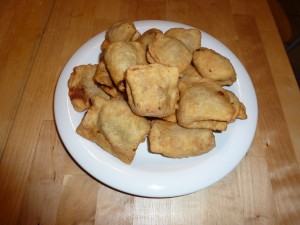
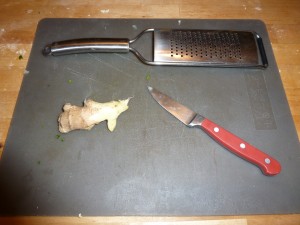
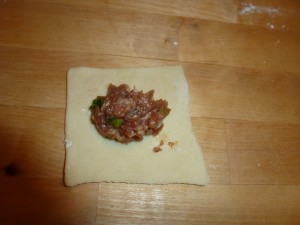
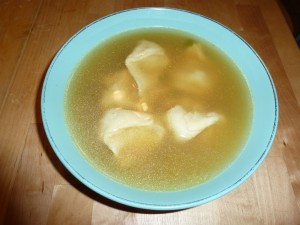
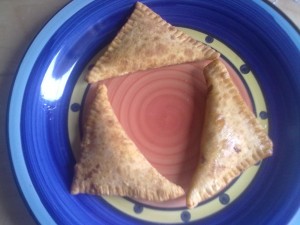
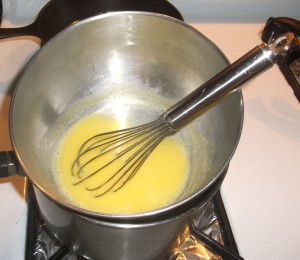
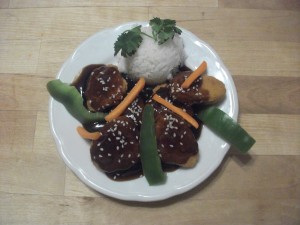
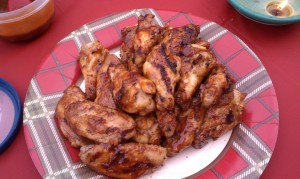
Follow Us!